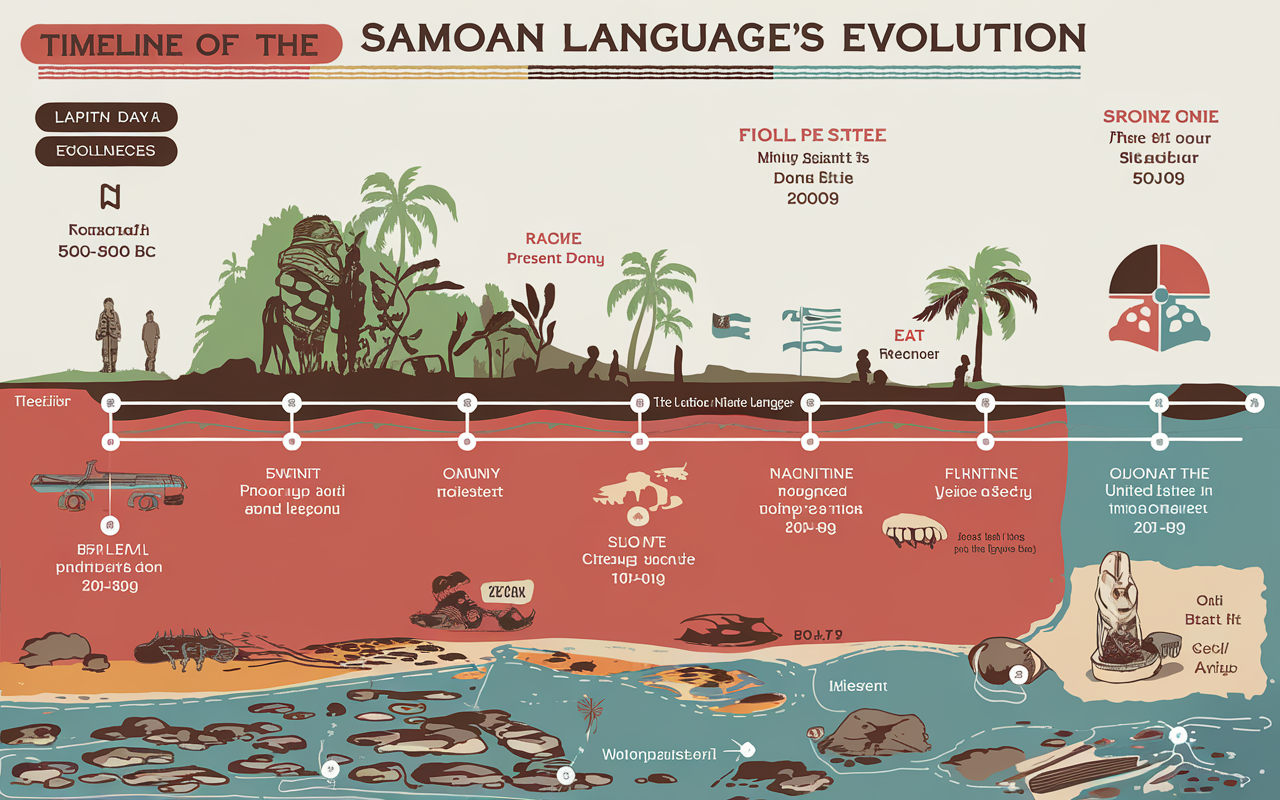English to Samoan: Key to Communicate Well in Pacific Island
The moment your feet touch Apia’s soil, ukulele strings whisper island secrets. English works fine here, but sprinkle some Samoan into your chat – suddenly you’re not just another tourist, you’re family in the making.

This article dives into the basics of English to Samoan translation. We’ll cover essential phrases, cultural insights, and resources for speaking this Pacific Island language. Whether you’re heading to Samoa or just curious about Polynesian culture, knowing Samoan can lead to meaningful connections.
Main Points
- Samoan flows from the lips of 200,000 islanders, painting their daily stories in melodic words passed down through generations.
- Pack a few sweet Samoan sayings in your beach bag – they’re better than any souvenir for turning random chats into lasting friendships.
- Ready to dive beyond tourist talk? We’ll walk you through the phrases that’ll make locals grin, plus the juicy cultural bits that make each word dance.
- Let these island words be your key to unlocking centuries of Polynesian soul – from ancient legends to modern street chat.
- Buckle up for a wild ride through Samoan’s twists and turns – from its deep roots to where it’s heading in tomorrow’s world.
The Enchanting Sounds of Samoa
Dive into the captivating world of the Samoan language, known as Gagana Samoa. Here, rhythmic melodies and vibrant expressions take you to the Pacific Islands’ heart. Discover the enchanting sounds that have echoed across the islands for centuries.
From the cheerful “Talofa” to the gracious “Fa’afetai” (thank you) and the decisive “Leai” (no), these sounds are unique. They bring you closer to the Pacific Islands’ culture.
Greetings and Basic Samoan Phrases
Crack open a “Talofa” like you mean it, wave “Soifua” to the setting sun, let “Fa’afetai” roll sweet off your tongue. Watch island faces light up when you dance with their words – suddenly you’re not just another tourist, you’re family.
These simple expressions help build rapport and foster meaningful interactions. They are key to connecting with the Samoan culture.
Counting in the Samoan Language
Counting in Samoan is melodic, from “tasi” (one) to “lua” (two), “tolu” (three), and “sefulu” (ten). Learning the Samoan numeric system helps in daily interactions. It also gives a glimpse into the rich cultural heritage.
Mastering these counting skills enriches your Samoan language learning. It deepens your appreciation for the islands’ unique linguistic traditions.
| Samoan Number | English Translation |
|---|---|
| tasi | one |
| lua | two |
| tolu | three |
| fa’a | four |
| lima | five |
| ono | six |
| fitu | seven |
| valu | eight |
| iva | nine |
| sefulu | ten |
Immerse yourself in the enchanting sounds of the Samoan language. Unlock a deeper connection to the vibrant Pacific Islands’ culture. Whether learning Samoan, exploring lessons, or seeking a tutor, this melodic language will captivate you.
Exploring the Polynesian Language Family
Samoan’s not a lone wolf – it’s got cousins scattered across the blue Pacific, from Hawaiian’s gentle waves to Maori’s warrior chants. Listen close and you’ll catch the family whispers: when a Cook Islander says “Kia Orana” or a Tongan drops “Malo e lelei,” you’re hearing echoes of ancient canoe songs. These connections highlight the rich diversity of Polynesian languages.
Common Greetings in Other Polynesian Languages
Learning common greetings in Polynesian languages helps us communicate better and appreciate their diversity. Here are some popular greetings:
- Kia Orana (Cook Islands)
- Mauri (Tahiti)
- Ia Orana (French Polynesia)
- Talofa (Tuvalu)
- Halo (Niue)
- Mālō e lelei (Tonga)
Knowing these greetings helps break language barriers. It opens a door to the rich culture of Polynesian peoples.
| Language | Greeting | Meaning |
|---|---|---|
| Cook Islands Māori | Kia Orana | “May you live long” |
| Tahitian | Mauri | “Hello” |
| French Polynesian | Ia Orana | “Greetings” |
| Tuvaluan | Talofa | “Hello” |
| Niuean | Halo | “Hello” |
| Tongan | Mālō e lelei | “Good/well, thank you” |

By learning these greetings, we deepen our understanding of Polynesian languages and culture. It enriches our view of the region’s linguistic heritage.
Unveiling the Evolution of the Samoan Tongue
Long before maps knew these islands, ancient sailors carved Gagana Samoa’s first words into the Pacific winds. Over time, it has grown, adding new words while keeping its core.
This shows how strong Samoan culture is. It has stood up to colonial powers and English. Learning about the Samoan language’s evolution helps us understand the island’s past and its role today.
Ever wonder how islander kids in big cities still speak their grandma’s tongue? Those Samoan churches are the secret sauce – language guardians wrapped in Sunday best. And yeah, Samoan’s got cousins all over the Pacific – it’s part of that big Austronesian family tree. This family has over 700 languages across vast areas.
The Samoan language has just fourteen letters. It has five vowels and nine consonants. Letters D and B are not used, while H, R, and K are rare. This makes the language unique.
The Samoan language’s evolution is tied to the islands’ history. The Lapita people arrived between 500 and 800 BC. The islands were later given to the United States in 1899. This history has shaped the history of the Samoan language.

The Samoan language keeps evolving. It’s a key part of the island’s culture. Its sounds, rhythms, and grammar connect the past to the present. By exploring the history and evolution of the Samoan language, we see its lasting strength.
Unique Linguistic Features of Samoan
The Samoan language has a long history, full of cultural expression. Its phonology and grammar offer a peek into Polynesian language. It’s a fascinating study of how language reflects culture.
The Rhythm and Melody of Samoan Phonology
Samoan has unique sounds, like the glottal stop. This pause between vowels gives the language a special rhythm. Learning the unique phonology is one of Samoan courses required to speaking it well.
The Intricate Dance of Samoan Grammar
The next Samoan lessons, in this language verbs are very important. They show the culture’s focus on action and movement. The language also has complex pronouns for social relationships.
The Samoan language features blend Polynesian and Austronesian influences. With about 430,000 speakers, it’s the third most spoken in New Zealand. Samoan enriches the Pacific region’s culture.

Bridging Cultures: The Importance of English to Samoan Translation
Translation today means more than matching words – it’s about keeping island stories burning bright while helping folks grab every chance life throws their way. When tools like BiRead jump in, suddenly you’re not just reading translations – you’re catching all those tiny sparks that make each language shine.
For Samoan students, elders, and businesses, Samoan language translation plays a vital role in connecting with the global community. As Samoa’s tourism grows, translation becomes essential for promoting cultural exchange and boosting economic growth. Tools like BiRead’s tailored translation systems can enhance communication, helping businesses and individuals bridge language barriers effortlessly.
Worldwide, around 370,337 people speak Samoan, with 199,377 speakers in Samoa as of 1999. Preserving this Polynesian language is crucial, and English to Samoan translation is a key part of that effort. Digital tools such as BiRead can make it easier for users to access and engage with the language, whether through an English Samoan dictionary, Samoan phrasebook, or learning Samoan through interactive content.
Samoan language translation services are essential for both education and business. They enable the Samoan-speaking community to connect with the rest of the world, improving communication and promoting inclusivity. BiRead can support these efforts by offering an immersive and intuitive platform for language learners and professionals alike, making it easier to learn Samoan, whether through self-study or guided Samoan lessons.

Whether it’s someone wanting to reconnect with their heritage or a company entering the Samoan market, English to Samoan translation is key. It not only bridges cultures but also helps build meaningful connections across borders.
The Present and Future of Samoan Machine Translation
Major translation tools now include Samoan, but the reality is more complex. With fewer speakers, there’s less data for language models, making it challenging to fully capture Samoan’s unique honorific system and cultural nuances.
However, progress is being made. Researchers and developers are continuously working to improve the accuracy and cultural understanding of automated Samoan translators. As Samoan language translation technology evolves, the gap between machine and human translation is gradually closing, helping to bridge languages in ways that were once unimaginable. Want to really get Samoan? Tools like BiRead are your study buddy, letting English and Samoan cruise together on your screen. Flip through phrase books or dig into dictionaries – everything clicks better when you can see both sides of the coin.

And talk about game-changers – since McCarthy dropped that “AI” bomb back in ’56, language tech’s gone from robot babble to smooth operator. These days, smart translation tools are serving up natural conversations for wandering souls and boardroom warriors alike. With BiRead’s capabilities, users can easily access translations while reading web content, helping them to engage more deeply with languages like Samoan.
Yet, these systems face challenges with less common languages like Samoan, which can result in translation errors. As Samoan machine translation improves, the goal is to enhance accuracy. This will involve refining machine learning models and neural networks to better handle translations, ensuring tools like BiRead offer consistent and culturally sensitive translations. This ongoing improvement also benefits educational resources, from Samoan lessons to Samoan courses, and even professional Samoan tutors.
Mastering the Art of Samoan Translation
Translating from English to Samoan is more than just words. It’s about understanding the culture and social norms of Samoa. Translators need to grasp the deep meaning behind words and how they fit into the bigger picture.
Here’s the thing about Samoan – it’s got layers like a fine mat. Some words bow deeper than others, especially when the village elders are around. Miss those respectful touches and you might as well be wearing flip-flops to a royal feast.Getting these right is crucial to avoid misunderstandings.
Cultural Sensitivity and Context
When translating, knowing the culture is key. Translators must learn Samoan customs, traditions, and social structures. This ensures the message is conveyed correctly, respecting the cultural context.
They need to understand Samoan values and how people communicate. This knowledge helps in avoiding cultural missteps.
The Delicate Dance of Honorifics
The Samoan language is known for its complex honorific system. It shows respect for elders and those in authority. Using these honorifics correctly is essential to avoid disrespect or confusion.
Working with experts, cultural advisors, and native speakers is crucial. They help ensure the translation is accurate and culturally sensitive. This way, translators can effectively connect English and Samoan, promoting understanding and cultural exchange.
Conclusion
Gagana Samoa isn’t just another language – it’s a living bridge to island wisdom, passed down through generations of storytellers and dreamers. Whether you’re packing for paradise or just hungry for new horizons, these words can change how you see the world.
These days, catching the rhythm of Samoan is easier than ever. Jump into an app between coffee breaks, join virtual study crews, or swing by a cultural fest and let the language find you. Tools like BiRead can enhance this journey by offering bilingual reading experiences and translation support, helping you navigate between languages with ease. Whether you’re using a Samoan phrasebook or an English Samoan dictionary, BiRead can make understanding Samoan more accessible.
Learning Samoan not only improves communication but also deepens your appreciation for the culture. It highlights the strength and beauty of Polynesian heritage. As you continue to learn, you’ll discover a rich world of traditions and cultural beauty that speaks through the language.
FAQ
What is the national language of Samoa?
The national language of Samoa is Samoan, also known as Gagana Samoa. It’s a soft and beautiful language. It’s the heartbeat of Samoan culture.
Why is learning Samoan phrases important for visitors to Samoa?
Learning a few Samoan phrases before your trip can make your experience better. It helps you connect with the friendly locals. It shows respect for the Samoan culture and language.
What are some common Samoan greetings and phrases?
Every Samoan hello (“Talofa”) opens doors, while a heartfelt thanks (“Fa’afetai”) makes friends for life. And don’t forget that simple “Leai” when you need to say no. Want to bargain at the market? Start with “tasi” and count your way up to “sefulu” – watch those vendor smiles grow.
How is the Samoan language related to other Polynesian languages?
Like stars in the same Pacific sky, Samoan shines alongside its relatives. Listen close and you’ll catch Hawaiian’s whispers and Maori’s echoes in its voice. Understanding these connections can help in communication across cultures.
What are the unique linguistic features of the Samoan language?
Samoan has a distinct rhythmic melody and unique sounds, like the glottal stop. It has a complex grammar system, where verbs are key. Pronouns reflect social relationships.
Why is accurate English to Samoan translation important?
Accurate translation is crucial for Samoan students, elders, and businesses. It helps them overcome language barriers and engage globally. It’s also key for cultural exchange and economic growth in Samoa’s tourism industry.
How does machine translation perform for the Samoan language?
Major translation tools now include Samoan, but machine translation for it is complex. The language’s nuances and culturally specific expressions are challenging. However, researchers are working to improve automated translations’ accuracy and cultural sensitivity.
Source Links
- Pacific greetings, farewells and phrases – https://www.massey.ac.nz/student-life/pacific-massey/pacific-greetings-farewells-and-phrases/
- Polynesian languages – https://en.wikipedia.org/wiki/Polynesian_languages
- A foundational Polynesian language to help study others later – http://forum.language-learners.org/viewtopic.php?t=2117
- Samoan language – https://en.wikipedia.org/wiki/Samoan_language
- Introduction to the Samoan Language – Gagana Samoa – https://gagana-samoa.com/learnsamoan/introduction-to-the-samoan-language/






